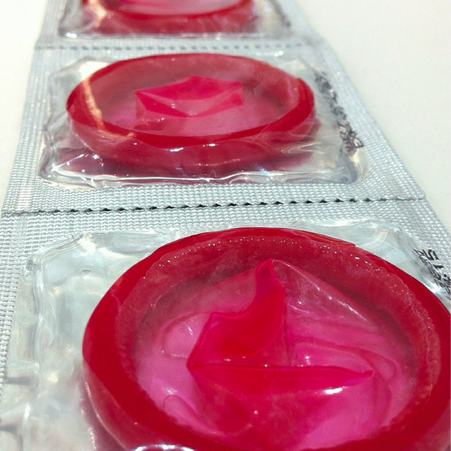
With the lights on
An introductory guide to making the dirty a little cleaner
Usually when we talk about safer sex, we’re talking about protections from STIs and pregnancy. Safer sex doesn’t necessarily mean that there’s no risk, it just means we’re limiting the risk and protecting our partners and ourselves. STIs can be transmitted via oral, manual or penetrative sex. They can be transmitted between two people with penises, two people with vaginas, or a person with a penis and a person with a vagina. Pregnancy is a risk in couples where there is one person who has a penis and the other has a vagina. So how do we limit these risks?
Toys and Fingers
People don’t consider that toys or even hands could transmit STIs or lead to pregnancy. But if there are bodily fluids being transferred from one person to another, it immediately allows for that risk. If you’re going to be sharing these things, be sure to wash off in between (wash your toys as directed on the packaging). You can also use condoms on many toys, and condoms or gloves on fingers in order to better protect yourself.
Barrier Methods
Barrier methods are exactly what they sound like. They provide a barrier between genitals or bodily fluids. Barrier methods include gloves (for hand jobs and fingering), condoms (for penises, fingers, toys, etc.), dental damns (for oral sex), and female condoms (for any time something is going inside the vagina). These methods are great because they reduce the risk of both STIs as well as pregnancy by a significant amount. You don’t want to double up on these though. The friction between two barrier methods actually increases the chance they’ll break.
Pregnancy Prevention
If you’re a person with a vagina, who’s trying to avoid getting pregnant, there are a lot of options open for you. The barrier methods listed above are great but other methods like the pill, the Depo-Provera shot, the ring, the patch, the implant, or an IUD, really allow you to take things into your own hands. Talk to your doctor about each of these methods to decide if one of them might be right for you. Remember though, none of these methods will protect you from STIs, so if you’re unsure of your status or your partner’s status, you’ll also want to use a barrier method.
Safe sex might seem like something we’re taught about in grade eight and then forget immediately. We might associate the term with the scary pictures of STIs we were shown — or we might be thinking of the catchphrase taught so often in schools, “the only safe sex is no sex.” But the reality is, sex is going to happen, and there are ways to reduce the risks, so why not take advantage? Sex can be so much more pleasurable and relaxed if you know you and your partner are both protected.






